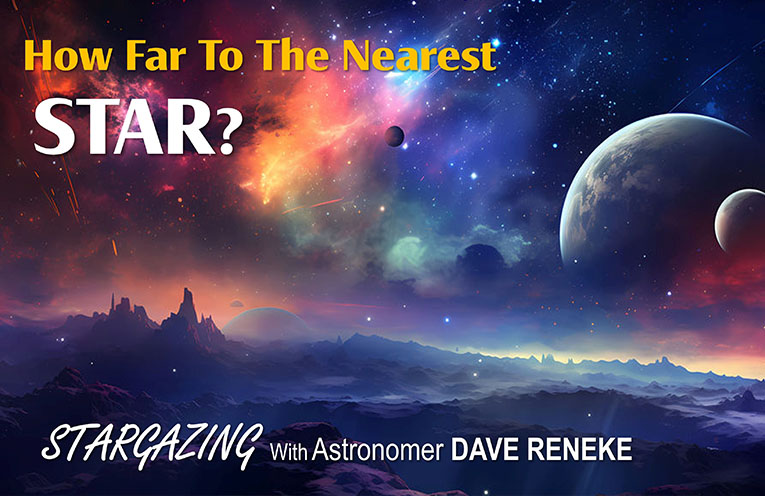LET’S say you woke up this morning, stretched, had your coffee, and thought, “I wonder how long it would take me to get to the nearest star?”
First, good morning.
Second, buckle up! Because this trip takes long-haul travel to a whole new level.
Our destination?
Proxima Centauri, the closest star beyond our Sun, is hanging out a casual 4.24 light-years away.
That’s about 40 trillion kilometres.
Yes, trillion with a “T.”
Even if you left yesterday, you’re still ridiculously far behind.
Let’s put that distance into perspective.
If Earth were the size of a marble, the Sun would be about a metre away – and Proxima Centauri would be over 380 kilometres away.
That’s Sydney to the mid-north coast, just to visit the nearest star.
It gets even crazier!
If you drove a car at 100 km/h, never stopping, it would take over 50 million years to reach Proxima Centauri.
That’s enough time for humans to evolve from tree-dwellers to TikTokers – twice.
The mighty Apollo missions got to the Moon in just three days, travelling at 40,000 km/h. Impressive, right? At that speed, the trip to Proxima would still take over 115,000 years.
That’s about 4,600 generations of humans. Imagine trying to pass down the GPS instructions.
NASA’s Voyager 1, launched in 1977, is the farthest human-made object from Earth.
It’s cruising at 61,000 km/h, and even so, it would take over 75,000 years to reach Proxima – if it were heading that way. Spoiler alert: it’s not. It’s drifting towards a different star in 40,000 years.
But don’t despair – this is where it gets exciting. In the future, interstellar travel could become a reality through advanced propulsion systems.
One idea is the ‘Breakthrough Starshot’ project, using powerful lasers on Earth to push tiny light sails to 20 percent of the speed of light.
A journey that once took 50 million years in a car could, with next-gen tech, be done in the time it takes for a kid to go from cradle to university.
Nuclear fusion engines could provide massive thrust and speed for larger craft.
Antimatter propulsion offers immense energy output, but it’s still theoretical. Another concept is the warp drive, which warps space itself – shrinking space in front and expanding it behind – but it requires exotic matter we haven’t yet discovered.
Ok, there are hurdles, but hey, nobody said interstellar travel was easy.
Besides being awesome, there’s a practical reason to look at our closest stellar neighbour. Proxima Centauri has an exoplanet – Proxima b – which sits in the star’s habitable zone.
That means it could, just maybe, have conditions for life.
Water, an atmosphere… even little green things waving at the sky?
In truth, we’re only just beginning to dream beyond our solar system. But as technology grows, our reach will too.
The stars aren’t just twinkling lights anymore – they’re destinations.
So next time someone asks you how long it takes to get to the nearest star, just smile and say: “Depends, are we talking car, rocket… or laser-powered spaceship?”
And who knows?
One day, someone might read this from orbit around Proxima b, looking back at Earth and thinking, “Wow, they learned quickly.”
By Dave RENEKE, Astronomer



